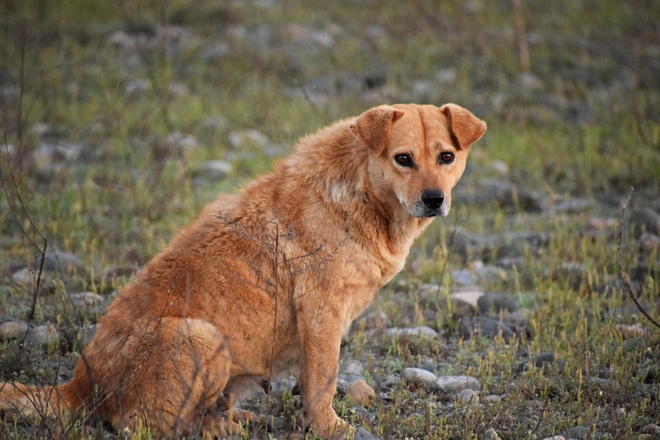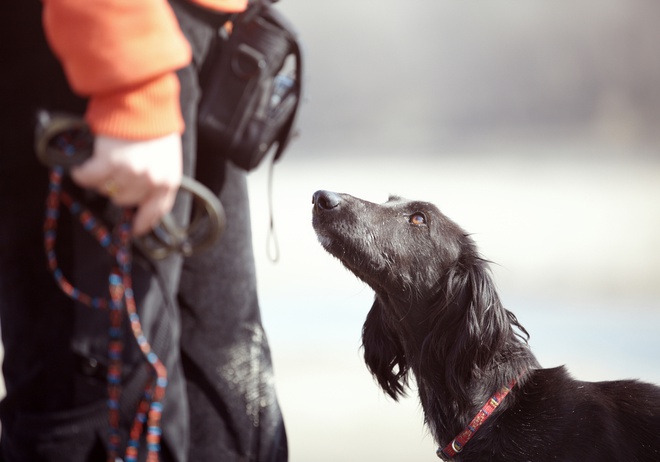What to do when you find a lost cat or dog in the UK?
It is not always easy to know what to do when finding a lost cat or a stray dog. In this article, you will find the steps to follow to reunite a lost pet with their owners as well as any formalities if you want to adopt the animal.

Reading time : 5 min
Between 2018 and 2019, almost 34,000 stray dogs were taken in by local councils across the UK. The numbers are even greater for cats as they are more independent and adventurous animals. That is alarming! Unfortunately, there are many reasons why a lost pet might never be found, which can leave the owners sad and disheartened. Losing a pet is very stressful for the owners, so what can you do if you end up in a situation where you find a lost pet?
Most of the time, however, when a cat or a dog gets lost, they will roam around their neighbourhood. If you see a stray pet, your first reflex might be to rescue them and take them away from the danger of oncoming traffic or from people who wish to do the animal harm. So how do you reunite a pet with their owner? What can you do when you find a lost dog or cat?
TOPICS
First steps to follow when finding a stray animal

Is the lost dog or lost cat wearing a collar?
First, it is important to identify the animal. According to the Control of Dogs Order 1992, every dog in a public place must wear a collar with the name and address of the owner inscribed on it, so the chances of you encountering a dog without a collar are low. It is however not mandatory for cats to wear collars, so it might be harder to identify the animal.
So, what can you do when you find a wandering dog or cat without a collar? You can contact your local animal warden to report the pet, who will then try and scan any microchip. Remember that you need to report any animal you find or rescue as you could be accused of theft.
Identifying the stray animal
An animal warden or a vet can identify the animal by checking its microchip. All dogs in England and Wales are legally required to be microchipped so it will be easier for them to identify the animal. The animal must be registered in a database like Animal Microchips, Animal Tracker, MicroDogID or Pet Identity UK.
The pet could also be tattooed on their right ear, however, tattooing domestic pets has become superfluous as hair can grow in that area and it requires heavy sedation.
Find out the 5 most important steps to find your lost pet
All the information you need to find your beloved companion
What are the different ways to report a rescued animal in the UK?

Contact your local authority dog warden
It is important to contact your local council or dog warden as soon as possible. You should find the dog warden’s information and phone number through the Environmental Health Department of your local council or through the Animal Wardens' website. As mentioned previously, the local dog warden is legally responsible for any strays, so they should be notified first.
Check listings on lost and found websites
It is not advised to keep the pet without reporting them to the authorities but if you must do so, checking websites and noticeboards would be the best way to find missing pets. Many publications are posted on these websites every day by worried pet owners so do not hesitate to browse them to check if the cat or dog you have found is listed.
On the off chance that you have found a lost dog or cat, you can transfer a picture of the pet on their website, and it will auto-match to the closest matches of reported lost pets. They search for a any type of pet, but especially cats.
You can also take a look at the DogLost website, which works in finding and reporting lost and found dogs. You can enroll on their site and report a dog you have found and the DogLost team will get into contact with the owners to get reunited with their pets.
By using a website, you are ensured to work with proficient research teams.
Check social media groups
Facebook is also a great place to publish a post about a missing pet as it is full of missing animal groups. You will find many Internet users on these groups who are sensitive to the animal cause.
Groups like Lost and Found Pets UK or London, UK – Lost Dogs, Cats & Pets are great resources as they are quicker alternatives to websites and can reach a wider audience. You can also publish a photo on your profile and ask your friends to share it widely.
Create a found poster and place it around the area
In many cases, a stray pet is found only a few streets away from their home. To help the pet’s owner, you can put up found posters in the streets of your neighbourhood or on your local supermarket noticeboard.
You can also distribute flyers around local dog parks. All you have to do is take a picture of the animal and describe them in as much detail as possible. You can write down your contact information as well as the dog warden’s so the owners can contact the appropriate person. A flyer is also great to easily slide into letterboxes or give out when going door to door.
Be careful, however, even if you know its identification number following your visit to the vet, do not include it in the description. With this information, anyone can present themselves by indicating the microchip number and claim to be the owner of the animal.
Can I keep the found cat or dog?

Is the found pet microchipped?
If you have found an animal and want to keep them, it is important to remember that their owner might want to get their animal back and vice versa. However, there are cases where the owner does not want the animal back. There are no official laws in the UK for that situation. You will have to prove that the previous owner is giving up their rights to the pet, and you will become the new official owner.
When in doubt, it is recommended that you ask your local animal warden that will be able to best advise in this situation. When you become the new owner, do not forget to update the animal’s information on their microchip.
If the stray pet is not identified
However, if you have found an animal that is not microchipped, they are considered ownerless. You will need to contact your local veterinarian to get the abandoned dog or cat microchipped and become their legal owner.
Conclusion
Rescuing a stray animal is often a kind and spontaneous gesture. Empathy naturally leads us to get the animal to safety and notify their owners as quickly as possible. But even if good intentions are always in order, it is not always easy to know who to turn to.
The most important thing is to contact an organisation that could help you and not hesitate to multiple the steps to return the pet to their family. And while waiting for a happy ending, the cuddly cat and dog can count on you. Simply petting a stray animal can help them relax.
Finally, even if it was not planned, getting attached to the stray can encourage you to adopt the animal. If they do not have an owner or if the owner dissociates himself from them, adoption is then entirely possible provided that you do things properly for the animal’s safety and your peace of mind.
Continue reading our guide
This article is part of a complete guide on the subject. Do not miss the next chapters.
How to find a lost pet ?
Discover the 5 most important steps
All the information you need to find your beloved companion


